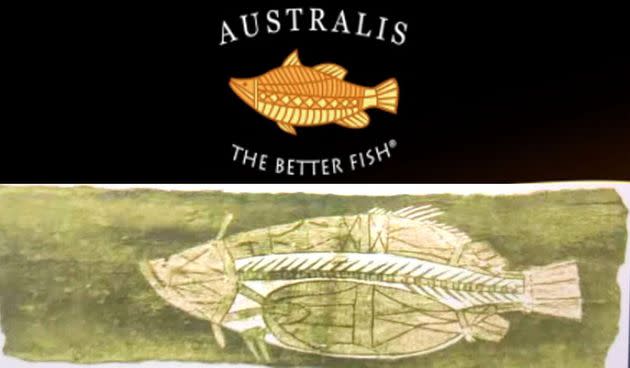A US-Owned Barramundi Company Has An ‘Aboriginal Art-Inspired’ Logo. Again, Here's Why That’s Wrong.

If 2020 has been good for something, it’s been stellar for interrogating the gaps in our knowledge when it comes to learning more about race, identity and culture.
The often-confrontational conversation around cultural appropriation is an example.
Cultural appropriation is defined as “the act of taking or using things from a culture that is not your own, especially without showing that you understand or respect this culture.”
This might sound easy enough to understand but, in our digital, globalised society, the lines between something that’s obviously offensive (blackface) and something that might be considered appreciative (use of another group’s cuisine or imagery) can be blurry.
But what about when a company ‘borrows’ from a minority culture, without permission or giving back to the community, to generate its own profit?
US-owned barramundi company Australis uses First Nations-inspired artwork from Arnhem Land on its logo to market its barramundi (a Gangulu language word for large-scale fish) in the US and Canada. The company’s barramundi is farmed in Vietnam and sold in most other markets, including Australia, under the Clean Harvest brand, which does not use Australian Aboriginal-inspired imagery.
“I believe the artist that created our logo took inspiration from Australian food and wines culture ― where modern interpretations of Aboriginal art has been prevalent,” Australis CEO Josh Goldman told HuffPost Australia via email, in response to questions from HuffPost about whether the artist was Indigenous or if the company was Indigenous-owned.
“Clearly, one can view this sort of inspiration through the lens of cultural appropriation ― or just as easily as a celebration of people, place and history. Respectfully, we see it as paying homage to history and an invitation to find connection between people.”


